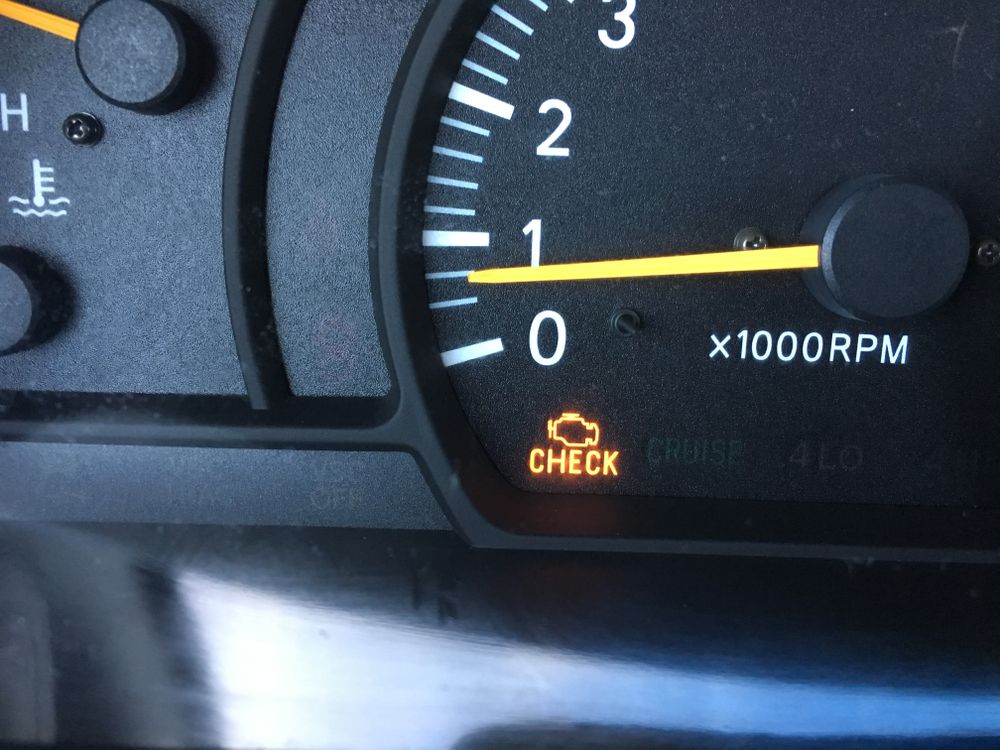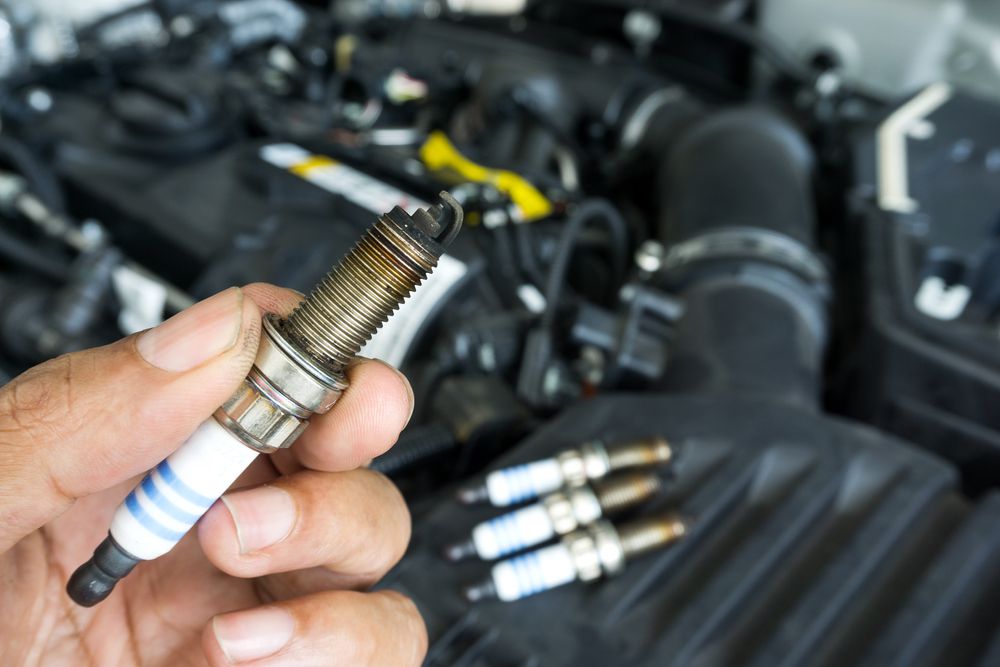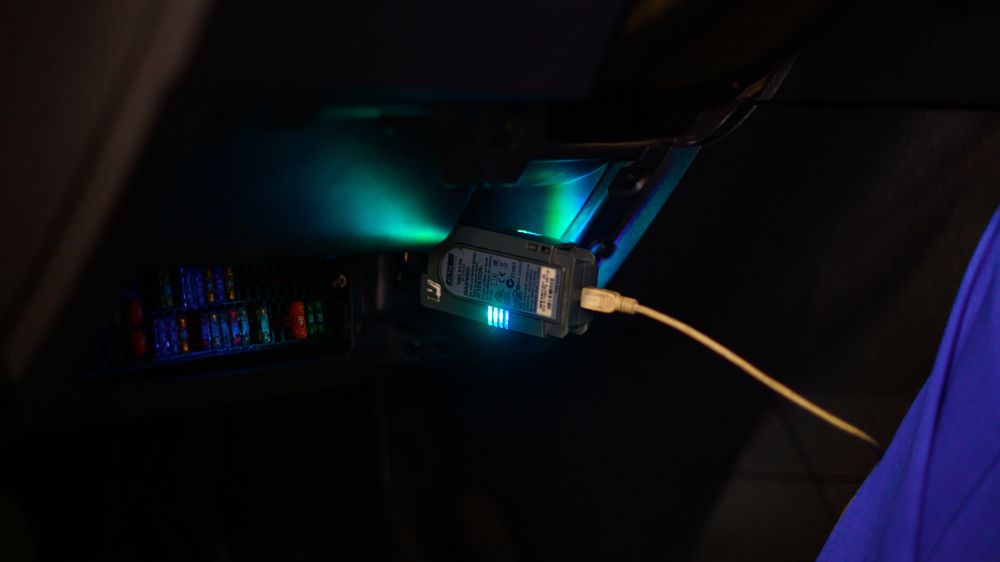The check engine light is sometimes the first sign that your vehicle is
having a problem. Also known as the Malfunction Indicator Light (MIL), it
is an indication from the car's computer system that something is wrong. It
sometimes appears before the symptoms of the problem do, so you have time
to act preemptively without running into issues while on the road.
So can the check engine light turn itself off?
The check engine light comes on when the car fails to pass the control
module's performance tests twice. It turns itself off only after the
engine passes the performance tests three times. So yes, the check
engine light can turn off if the triggered problem has been resolved.
A car's control module is designed to monitor its performance continuously.
From engine timing to fuel/air ratio, this computer keeps tabs on every
aspect of the car.
When it detects a problem, it runs tests to verify the problem. If your
vehicle fails these tests two times, the control module makes the check
engine light turn on to alert you that something is wrong.
When the MIL illuminates, you should take your car to the mechanic to
diagnose and resolve the issue. Once resolved, your vehicle has to pass the
performance tests three times for the check engine light to turn itself
off.
But sometimes, the problem is intermittent. In this case, the light will
turn off and on between engine starts.
So is check engine light always serious? How long does it take for the MIL
to go off? Let's discuss it!
 Check engine lights can sometimes turn off themselves.
Check engine lights can sometimes turn off themselves.
Is Check Engine Light Always Serious?
A solid check engine light is not always serious. But a flashing or red
or orange check engine light indicates a serious problem with the car's
system that needs your urgent attention.
Since it is reporting you about a problem in the vehicle you are driving,
you should never ignore a check engine light. But that does not always mean
you must immediately take care of the problem.
If your check engine light turns on but remains a steady yellow, you should
set an appointment with your mechanic to check your car. But if the light
blinks or turns red or orange, it indicates a catastrophic engine failure.
You should immediately transport your vehicle to an auto repair shop when
this happens. If you take it there yourself, drive slowly and carefully.
But if you experience anything wrong with how it drives or in its gauges,
pull over to the side and call for a tow.
Here are some issues that can trigger this indicator light:
Engine Problems
It goes without implying that the MIL is an indicator of engine problems.
Your car's engine is ridden with a collection of sensors. The control
module monitors these sensors to ensure proper operation. Whenever it
detects any issue with the way the engine is running, the control module
triggers the check engine light.
Emission Equipment Problems
Modern cars have an entire system of emission equipment onboard, including:
-
catalytic converter
-
evaporative emission system
-
exhaust gas recirculation system
Each part of the system is responsible for reducing your tailpipe emissions
to safeguard the environment.
Any minor issue with the emission equipment, such as a loose gas cap or a
big one like a faulty catalytic converter, can make the check engine light
turn on.
Transmission Problems
The car's transmission is responsible for transmitting the engine's power
to drive the wheels. Since it is responsible for connecting the two
assemblies, any problem with the transmission, big or small, can trigger
the malfunction indicator.
Problems With Powertrain
A series of sensors and modules govern a vehicle's powertrain. These
sensors and modules communicate with each other via a vast data network.
Therefore, your check engine light can also be triggered if issues arise
within the sensors, modules, wiring, and network.
 Fouled spark plugs can cause a check engine light.
Fouled spark plugs can cause a check engine light.
Ignition Problems
The ignition system consists of spark plugs, coils, and other equipment
required to ignite the fuel/air mixture inside the combustion chamber. The
control module also monitors the ignition system's performance. And if it
detects any problem, it will trigger a check engine light.
Issue With Fuel/air Delivery
A car's engine requires the correct fuel/air ratio to run properly. The
control module will notice if it gets too much fuel and too little air or
vice versa. This is another reason for the MIL to come on.
How Long Does It Take For A Check Engine Light To Go Off?
It takes about 10 to 20 successful driving cycles for the check light
to go off. But it will happen only after you have taken care of the
issue that caused it to illuminate. You can also use an OBD2 scanner to
turn off the check engine light in a few minutes.
Amazon has a multitude of OBD2 scanners at affordable prices like this one here (paid link).
One thing you should understand about the check engine light: it does not
turn off unless you address the underlying issue.
It will go off only after you have fixed the problem. That, too, after some
time.
If you want the MIL to go off, you must wait for it to reset. A car usually
completes about 10 to 20 successful cycles before resetting the check
engine light.
A driving cycle starts when you start a cold car and take it for a drive
until it is warm.
It ends when you switch the warm engine off after driving.
So turning on a warm car is not the start of a cycle. And turning it off
before it becomes warm also does not signal its end.
So for a successful driving cycle, you must start with a cold engine and
stop when it is warm.
But, of course, this will be very time-consuming, so if you want the check
engine light to go away quickly, you can use an OBD2 scanner to reset it
manually. Here's how:
-
Connect your OBD2 scanner with the connector under most cars' steering
columns.
-
Now switch the car's ignition to ON. This will establish a connection
between the vehicle and the scanner.
-
Press the "read" button on the scanner to search for any stored trouble
codes. If there are any, the issue behind the check engine light is not
resolved.
-
Decode the codes to understand the problem and solve it.
-
Once the issue is resolved, press the "Clear/Erase" button on the
scanner to remove it.
-
Switch off the ignition and turn it back again. The MIL should turn
off.
 Scanner plugged into the OBD2 port underneath the steering column.
Scanner plugged into the OBD2 port underneath the steering column.
Why Does My Check Engine Light Come On Then Go Off?
Your check engine light may come on and go off intermittently when your
car's control module fails to register the issue at all times. Or you
have a faulty part that functions intermittently.
Having an intermittent malfunction indicator does not mean your car is in
better shape than the one with the check engine continuously on.
Nor does it mean that there is a glitch in the car's computer. Instead,
there is a problem, but your vehicle is having trouble identifying it.
You should not ignore a malfunction indicator under any circumstances. And
having one turn on intermittently means that your car is having issues, but
they are not always visible to the control module.
Here is what can cause your check engine light to come on and then go off:
Unfastened Gas Cap
Believe it or not, something as simple as a loose gas cap can trigger the
malfunction indicator light.
If your gas cap is missing or you have not tightened it, it will allow the
gasoline vapors to escape rather than recirculate in your gas tank system.
However, when the fuel system fails to circulate the gas properly, it may
trigger the MIL.
After tightening the gas cap, the check engine light should turn off shortly.
Failing Spark Plugs
Spark plugs ignite the air/fuel mixture inside the combustion chamber. They
fail when the tip is repeatedly overheated.
When they do not fire properly, it can cause an engine to misfire, making
the check engine light turn on.
Defective Oxygen Sensor
The oxygen sensor ensures that your car gets the right amount of oxygen to
mix with gasoline.
This oxygen is necessary for the combustion to play out.
A faulty oxygen sensor can also trigger the check engine indicator.
If there is too much oxygen, it will lead to engine damage. And, if there
isn't enough oxygen, the combustion process won't occur properly.
Faulty Catalytic Converter
This part helps protect our environment by converting carbon monoxide into
carbon dioxide.
If your catalytic converter becomes faulty, it will reduce your engine's
performance and fuel economy.
Plus, it will also increase your emissions. A faulty catalytic converter
may not always cause your check engine light to be turned on, but it is a
problem that you should not ignore.
Conclusion
Can the check engine light turn itself off? Yes. But you should not wait
too long for it to do so, especially when it is flashing or has turned
orange or red.
Even if your car runs smoothly after the malfunction indicator has turned
on, you should have your mechanic look at your earliest convenience.
You can also use an OBD2 scanner to independently diagnose and solve the
issue.
The check engine light does not turn off immediately. The car must pass the
control module's three performance tests before turning the indicator off.
This can sometimes take up to 20 successful driving cycles. But you can
also use your OBD2 scanner to turn it off within minutes.